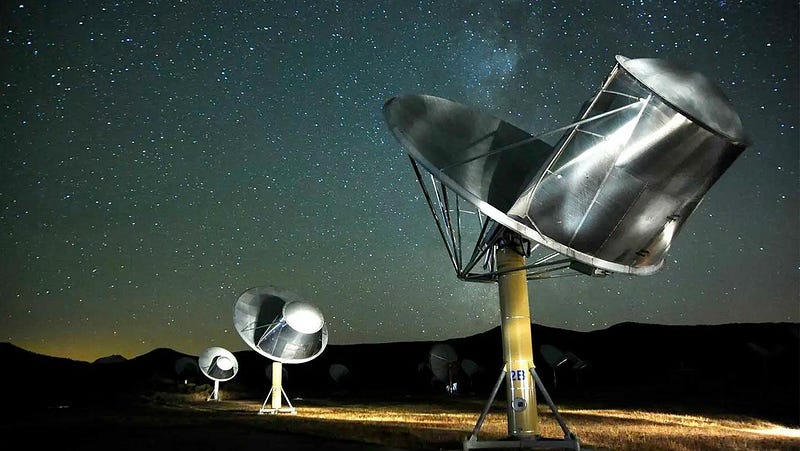Fermi Paradox: The Search for Intelligent Life in the Cosmos
Written on
Chapter 1: Understanding the Fermi Paradox
Are we truly the only intelligent beings in the Universe? The evidence suggests otherwise.

As astronomers deepen their understanding of the cosmos, it's clear that Earth, along with its inhabitants, represents a minuscule fraction of a vast universe. Current estimates suggest that our Universe spans approximately 92 billion light-years, which translates to around 540 thousand billion billion miles. This staggering scale has led many scientists to ponder whether intelligent life exists beyond our planet. Notably, there is a dedicated field known as SETI—Search for ExtraTerrestrial Intelligence—focused on this inquiry, which we will discuss further in upcoming articles. To date, however, SETI researchers have not found any conclusive evidence of alien intelligence.
This dilemma is encapsulated in the Fermi Paradox: Given the age and enormity of the Universe, one would expect it to be filled with intelligent extraterrestrial life, yet we lack substantial scientific proof to support this notion. So, the question remains: where are all the aliens?

Scientists have various reasons to believe that we should have noticed signals of alien life by now. The Universe offers numerous potential habitats for life. Our Galaxy alone contains approximately 300 billion stars, and there are around 2 trillion galaxies in total. Additionally, our Sun is not particularly unique among stars. If intelligent life could arise in our Solar System, it stands to reason that it could also emerge elsewhere.
Time is another crucial factor. The Universe is estimated to be about 13.8 billion years old, give or take 37 million years. To put this into perspective, if we imagine the age of the Universe as one Earth year, the entirety of human history—approximately 200,000 years—would account for less than the final 10 minutes of December 31st in that year. Science, as we understand it, would only begin one second before the stroke of midnight on this cosmic timeline.
When viewed through this lens, even millions of years seem insignificant. If extraterrestrial civilizations exist, some could be millions or even billions of years old, granting them the capability to colonize the Galaxy. Yet, we have seen no evidence of such advanced societies.

SETI, which began in the 1960s, has seen scientists actively searching for signs of advanced extraterrestrial civilizations. Unfortunately, these efforts have yet to yield any results. With each passing year without evidence of extraterrestrial life, the paradox becomes increasingly significant. Today, the Fermi Paradox is considered one of the pivotal questions in science, ranking alongside inquiries into the nature of consciousness and the origins of life.
Chapter 2: Further Explorations
For additional insights, consider exploring these topics:
- What Is Nanotechnology and Where Is the Field Today? — A look at the evolution of nanotechnology.
- Three Instances in History When Scientists Believed They Made Contact with Aliens — A review of historical attempts to engage with extraterrestrial beings.
- How to Attempt Contact with Aliens: Scientific Approaches — An overview of methods proposed by science for reaching out to extraterrestrial life.
Citations: - Webb, Stephen. If the Universe Is Teeming with Aliens … Where Is EVERYBODY? Seventy-Five Solutions to the Fermi Paradox and the Problem of Extraterrestrial Life. Springer International Publishing, 2015.